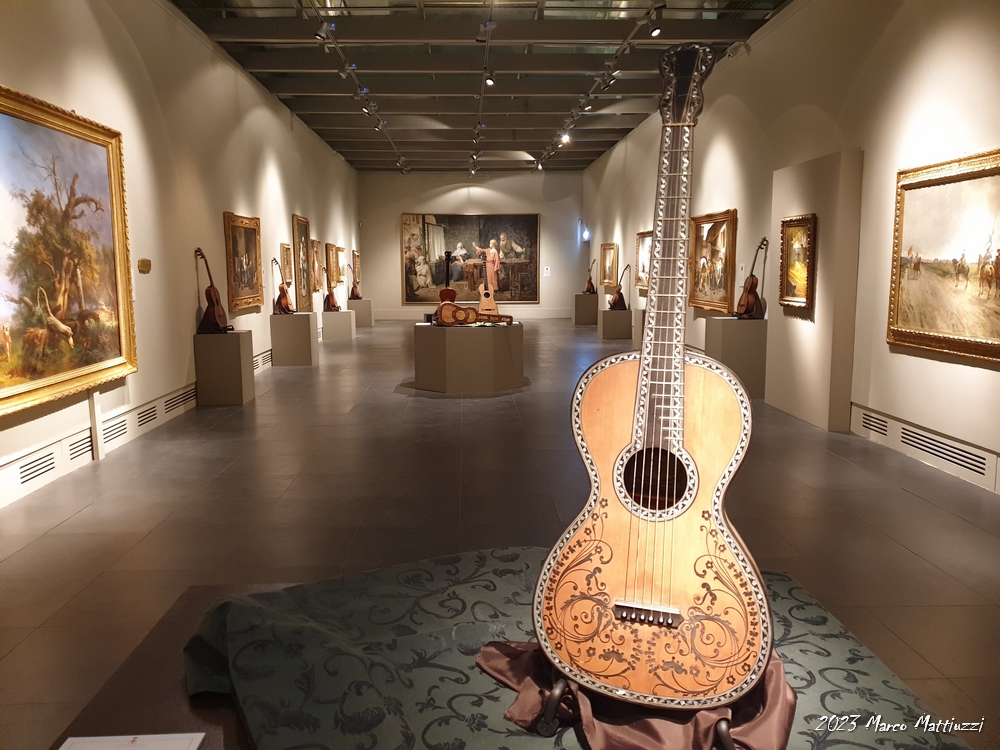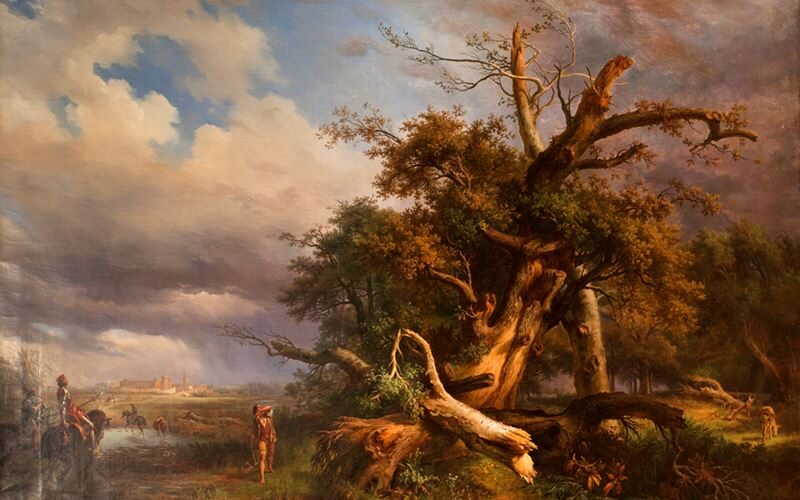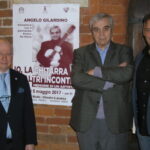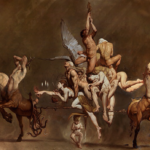Massimo Taparelli d’Azeglio’s work ‘Muzio Attendolo Sforza Throwing the Axe at the Tree’ is a captivating oil on canvas of considerable size (177×247 cm). Commissioned in 1858 by Lorenzo Sforza Cesarini, it captures a historical episode previously illustrated by D’Azeglio, reflecting his interest in scenes of historical and literary heroism. D’Azeglio had written to the duke expressing his enthusiasm for revisiting the theme, considering it appropriate for the Sforza family to possess representations of their history. The artwork has passed through various collections before being displayed at ARCA in Vercelli, including those of Franco Di Castro and Luisa Laureati Briganti. It has been honored in significant exhibitions and publications on Romanticism, attesting to its contribution to historical and landscape painting in Romantic Italy.
‘Muzio Attendolo Sforza Throwing the Axe at the Tree’ captures a moment in the life of Muzio Attendolo Sforza, an Italian condottiero and founder of the Sforza dynasty, in a display of strength and determination, symbolized by the act of hurling an axe towards a tree. The surrounding landscape, immersed in atmospheric light and detail, serves as a historical backdrop to the narrative, evoking the sense of power and destiny of the Sforza family. The painting thus embodies the intertwining of historical narrative and D’Azeglio’s artistic mastery, offering a glimpse into Romanticism that values naturalistic expression and patriotic sentiment of the era.
The life of Muzio Attendolo, born in 1369 in Cotignola to a family of rural nobility, took a decisive turn when, as a young man, he decided to follow a group of mercenaries, abandoning agricultural life. This impulsive act led him to join the company of Alberico da Barbiano, who nicknamed him ‘Sforza’ for his strength. He soon became a prominent condottiero, shifting allegiances among various Italian city-states and fighting in several significant battles, like the one at Casalecchio in 1402. His military career was marked by changes in alliances and moments of tension, including conflicts with Queen Giovanna II of Naples, who appointed him Grand Constable of her kingdom but later imprisoned him due to court jealousies. He was freed through the intervention of his troops and married Caterina Alopo, the sister of his rival Pandolfello Alopo. His life ended tragically in 1424, attempting to save a page during the crossing of the Pescara River and drowning.
Massimo Taparelli d’Azeglio was a multifaceted artist: a painter, writer, and politician. His painting, in particular, reflects a period of transition, marking the dawn of Romanticism in Italy. In his work, ‘Muzio Attendolo Sforza Throwing the Axe at the Tree’, he interprets a symbolic moment in Sforza’s life, expressing through painting the strength and determination of this historical figure. The painting exemplifies the artist’s ability to blend landscape and historical narrative, a typical approach of his ‘istoriated landscape’ that places human events in a naturalistic context, merging historical and literary heroism with a detailed representation of nature. This fusion of elements creates a rich and layered visual narrative, conveying not just the story of an individual but the essence of an era. An artistic current that found fertile ground in Italy during the 19th century, where D’Azeglio, influenced by his training under Martin Verstappen, distilled in his style the taste for Northern European detail and a visual language resonating with echoes of the 18th century.
The exhibition ‘The Singing Wood’, where Massimo Taparelli d’Azeglio’s ‘Muzio Attendolo Sforza Throwing the Axe at the Tree’ is displayed until January 7, 2024, pays tribute to the master Angelo Gilardino, a distinguished composer and guitarist from Vercelli of international fame and a passionate enthusiast of 19th-century painting. This exhibition is a dialogue between visual arts and music through an exhibition path that combines the visual heritage of the past with the legacy of luthiers who have made history, creating a multisensory experience that celebrates Italian cultural richness. The exhibition is organized by the Angelo Gilardino Association, chaired by the renowned guitarist Marco De Santi, with contributions from the painting collection of the gallery owner Italo Segalini from Brescia and the collection of historic guitars of the luthier Lorenzo Frignani.













